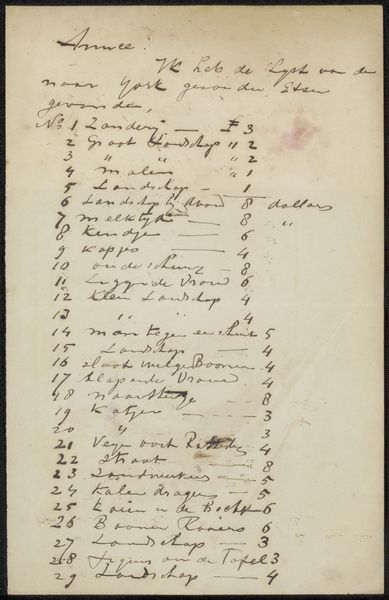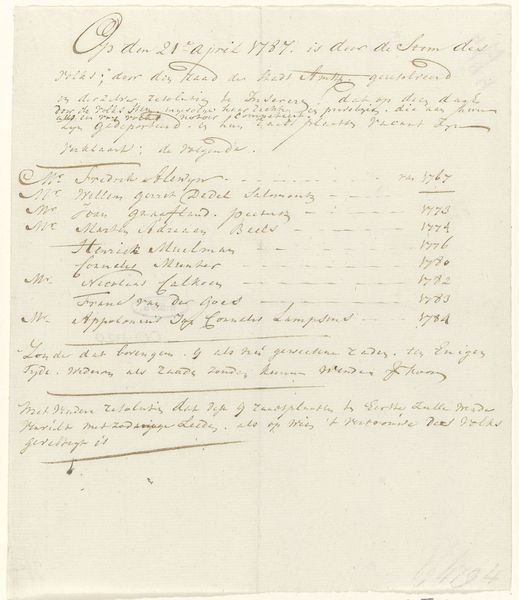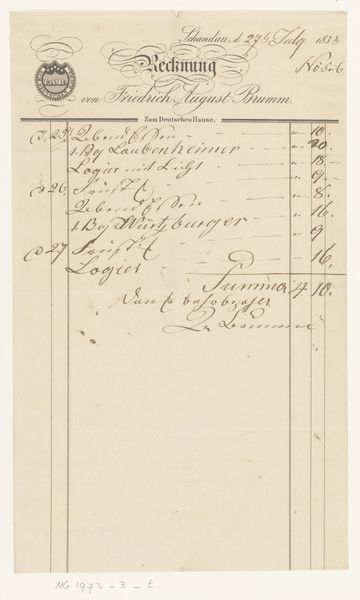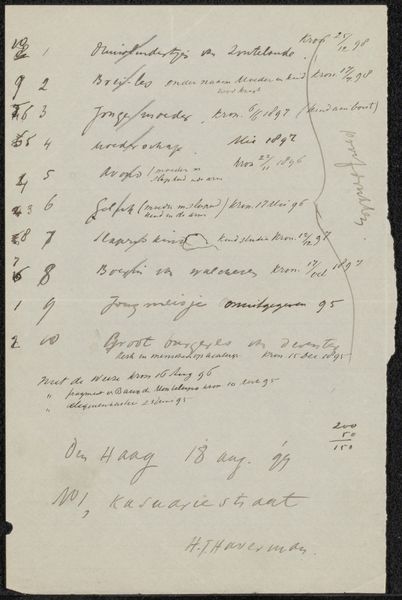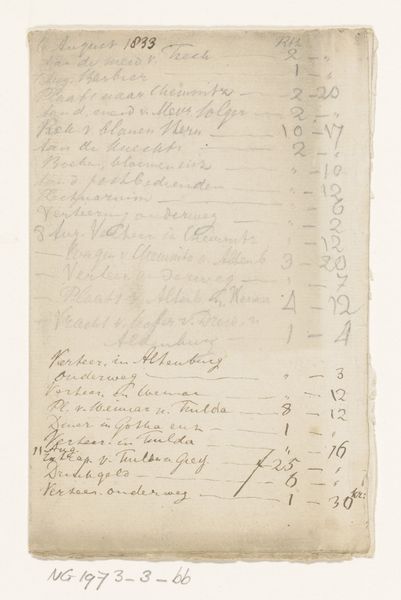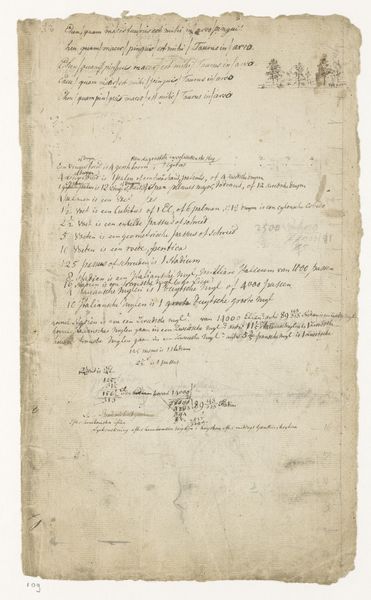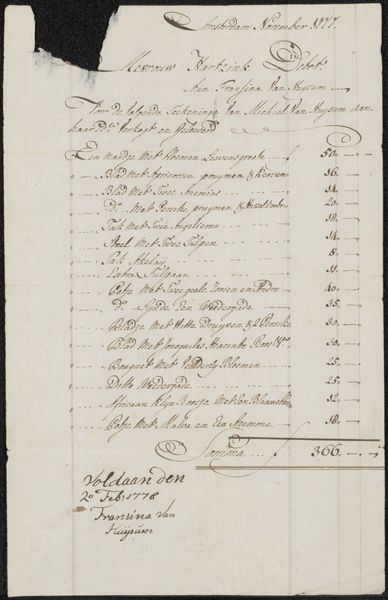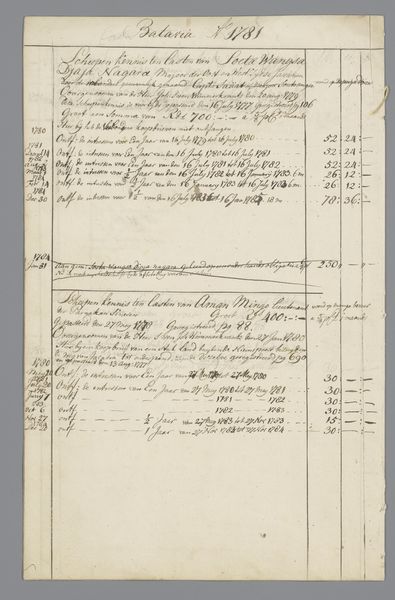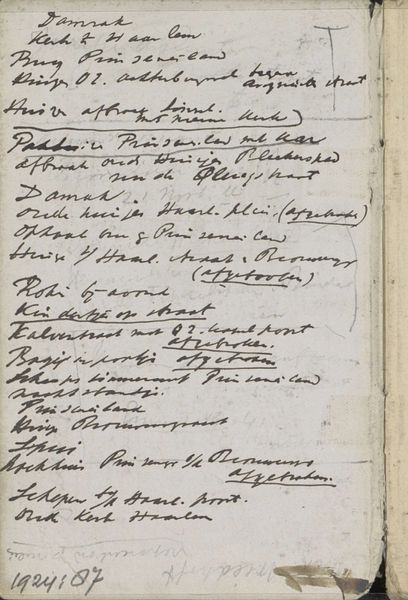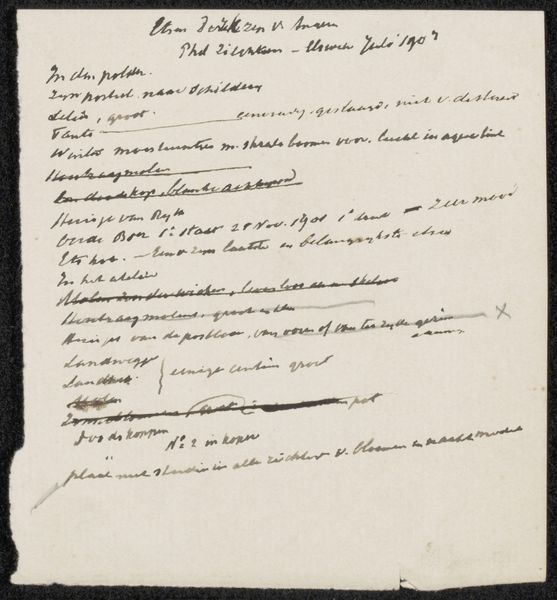
Rekening van Dubourg aan Philippe Metayer, 1731, betaald 13 december 1737 (in doos met 43 tekeningen) 1737
0:00
0:00
drawing, paper, ink
#
drawing
#
baroque
#
paper
#
ink
Dimensions: height 196 mm, width 158 mm
Copyright: Rijks Museum: Open Domain
Curator: Here we have “Rekening van Dubourg aan Philippe Metayer, 1731, betaald 13 december 1737,” held at the Rijksmuseum. It's a bill composed by Louis Fabritius Dubourg for Philippe Metayer, rendered in ink on paper, dating back to 1737. What are your initial thoughts? Editor: Immediately, I'm drawn to the raw quality. The strokes of the pen are quite direct and unsentimental. The materiality speaks volumes about everyday commerce and artistic production intertwined. Curator: Indeed. Considering the baroque style prominent at the time, we might interpret the itemized list not just as a financial record, but as a calculated construction reflecting a hierarchical structure. See how Dubourg lists drawings of mythological subjects. It's an orchestration. Editor: Precisely. These weren't merely sketches but commissioned artworks for Metayer, implying a system of patronage. I’m more intrigued by the materiality of it – paper as a substrate bearing traces of social interaction. Think about the labor involved – the crafting of the paper, the mixing of the ink, the transcription itself! Curator: But let's also examine its semiotic nature. "Venus & Adonis," "Diana," these are recognizable visual motifs reduced to textual entries. It prompts a reading beyond mere utility. Consider the social status afforded through owning artworks that refer back to historical paintings, thereby accumulating layers of symbolic meaning and prestige. Editor: Right. It also hints at the commodification of artistic skill. Dubourg isn’t just producing 'art,' he’s manufacturing goods subject to the demands of his patron. This receipt almost dissolves the romantic notion of the artist, exposing the economics underpinning artistic practice. Curator: Well, considering the formal structure and detailed list, I'd argue Dubourg constructs a controlled tableau even within this document. The visual balance and rhythm of script point towards an intent beyond bare recording, shaping our engagement and framing interpretations around established social roles. Editor: I agree that its a material artifact embodying the lived realities of Baroque artists negotiating the terrain of labor, value, and market demands. The intimacy with ink and paper, however humble, reveals how social status influences art production and reveals an undercurrent that transcends stylistic considerations.
Comments
No comments
Be the first to comment and join the conversation on the ultimate creative platform.
